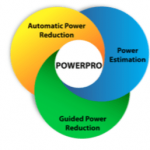Back When We Loved Discovery
As anyone who reads and follows my blog posts will know, I’m a believer in innovation. It’s what drives my passion for the Internet of Things. That interest started when I was an “Apollo” kid during the 1960’s and 1970’s. Those decades offered a very different landscape for creativity, exploration and… Read More
 EDA Has a Value Capture Problem — An Outsider’s ViewBy Liyue Yan (lyan1@bu.edu) Fact 1: In the…Read More
EDA Has a Value Capture Problem — An Outsider’s ViewBy Liyue Yan (lyan1@bu.edu) Fact 1: In the…Read More WEBINAR: How PCIe Multistream Architecture is Enabling AI ConnectivityIn the race to power ever-larger AI models,…Read More
WEBINAR: How PCIe Multistream Architecture is Enabling AI ConnectivityIn the race to power ever-larger AI models,…Read More A Six-Minute Journey to Secure Chip Design with CaspiaHardware-level chip security has become an important topic…Read More
A Six-Minute Journey to Secure Chip Design with CaspiaHardware-level chip security has become an important topic…Read More Lessons from the DeepChip Wars: What a Decade-old Debate Teaches Us About Tech EvolutionThe competitive landscape of hardware-assisted verification (HAV) has…Read More
Lessons from the DeepChip Wars: What a Decade-old Debate Teaches Us About Tech EvolutionThe competitive landscape of hardware-assisted verification (HAV) has…Read More Think Quantum Computing is Hype? Mastercard Begs to DisagreeJust got an opportunity to write a blog…Read More
Think Quantum Computing is Hype? Mastercard Begs to DisagreeJust got an opportunity to write a blog…Read MoreScalable Infrastructure for Digital Businesses
Building Digital businesses is tough. The run-time changes rapidly (browser – apps – bots), and standards for the digital architecture/stack gets refined constantly. Pace of innovation is accelerating due to massive war-chest of the top digital players like Google, Facebook, Apple and Amazon. For the Fortune… Read More
Will TSMC be alone at 10nm and 7nm?!?!?
Now that the dust has settled let’s talk about the recent TSMC OIP Ecosystem Forum. This was the 6[SUP]th[/SUP] annual OIP which hosts more than 1,000 attendees from TSMC’s top customers and partners. Presenting this year were TSMC VP and CTO Dr. Jack Sun, TSMC VP of R&D Dr. Cliff Hou, and ARM EVP of Incubation Businesses Dr. Dipesh… Read More
CCIX shows up in ARM CMN-600 interconnect
All the hubbub about FPGA-accelerated servers prompts a big question about cache coherency. Performance gains from external acceleration hardware can be wiped out if the system CPU cluster is frequently taking hits from cache misses after data is worked on by an accelerator.
ARM’s latest third-generation CoreLink CMN-600 … Read More
Meet the POWER9 Chip Family
When you looked at a chip in the past you primarily were concerned with two things: the speed of the chip, usually expressed in GHz, and how much power it consumed. Today the IBM engineers preparing the newest POWER chip, the 14nm POWER9, are tweaking the chips for the different workloads it might run, such as cognitive or cloud, and… Read More
Low power physical design in the age of FinFETs
Low power is now a goal for most digital circuit designs. This is to reduce costs for packaging, cooling, and electricity; to increase battery life; and to improve performance without overheating. I talked to the experts on physical design for ultra-low power at Mentor Graphics recently about the challenges to P&R tools and… Read More
Cadence DSPs float for efficiency in complex apps
Floating-point computation has been a staple of mainframe, minicomputer, supercomputer, workstation, and PC platforms for decades. Almost all modern microprocessor IP supports the IEEE 754 floating-point standard. Embedded design, for reasons of power and area and thereby cost, often eschews floating-point hardware… Read More
16nm HBM Implementation Presentation Highlights CoWoS During TSMC’s OIP
Once a year, during the TSMC’s Open Innovation Platform (OIP) Forum you can expect to see cutting edge technical achievements by TSMC and their partners. This year was no exception, with Open-Silicon presenting its accomplishments in implementing an HBM reference design in 16nm. It’s well understood that HBM offers huge benefits… Read More
Power Exploration at RTL Design with Mentor PowerPro
There was a comment recently that design for low power is not an event, it’s a process; that comment is absolutely correct. Power is affected by everything in the electronic ecosystem, from application software all the way down to layout and process choices. Yet power as a metric is much more challenging to model and control than … Read More
It’s a heterogeneous world and cache rules it now
Cache evolved when the world was all about homogeneous processing and slow and expensive shared memory. Now, compute is just part of the problem – devices need to handle display, connectivity, storage, and other tasks, all at the same time. Different, heterogeneous cores handle different workflows in the modern SoC, and the burden… Read More





AI RTL Generation versus AI RTL Verification